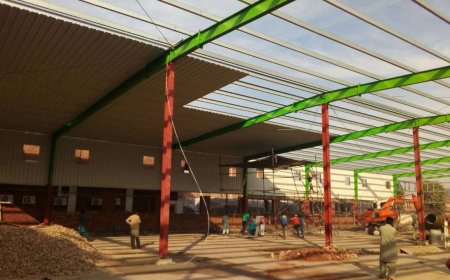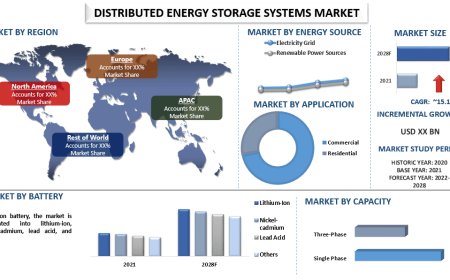How Industrial Shell Structures Are Designed and Constructed Properly
A detailed overview of how industrial shell structures are designed and constructed for industrial use. Covers design planning, materials, safety, and maintenance ideal for companies looking to build durable, cost-effective industrial facilities in Pakistan.

Introduction
Industrial shell structures play a vital role in supporting large-scale operations such as manufacturing, warehousing, and logistics. These structures are designed to house heavy machinery, store bulk materials, and provide a safe and efficient working environment. The importance of precise planning, appropriate material selection, and proper construction techniques cannot be overstated. A well-designed industrial shell not only improves operational efficiency but also ensures long-term durability and safety for the facility and its workforce.
As industrial operations grow in complexity, so do the requirements for their physical infrastructure. Industrial shell structures must withstand varying environmental conditions, support dynamic loads, and provide flexible space for future expansion or operational changes. By focusing on structural integrity and construction quality, companies can significantly reduce long-term maintenance costs and operational disruptions.
Understanding the Purpose and Design Requirements
The first step in developing an industrial shell structure is identifying its purpose. The function of the building influences every aspect of its design. For instance, a facility meant for heavy machinery will have vastly different requirements than one used primarily for storage. Design elements must align with the functional demands of the operation, whether it involves temperature-sensitive materials, high foot traffic, or the need for heavy load-bearing floors.
Engineers and architects evaluate several key factors during the planning stage:
-
Load-bearing capacities: How much weight will the structure need to support on floors, walls, and roofs?
-
Environmental considerations: Local weather patterns, including wind speeds, seismic activity, temperature variations, and humidity.
-
Internal layout and workflow: The design must accommodate smooth internal movement, efficient space usage, and potential future modifications.
-
Material handling requirements: Large doorways, loading docks, overhead cranes, and ventilation systems may be necessary depending on the industry.
These considerations help in establishing a blueprint that maximizes performance while minimizing risks.
Material Selection and Structural Components
Material selection is a cornerstone of industrial shell structure design. The chosen materials must fulfill structural, safety, and economic requirements. Commonly used materials include:
-
Steel: Known for its strength-to-weight ratio, steel is the most preferred material for industrial shells. It allows long, uninterrupted spans, providing open floor plans without the need for many internal columns.
-
Reinforced concrete: Offers excellent fire resistance and is ideal for areas requiring high load capacity and durability.
-
Composite materials: These may be used for specific applications requiring lightweight structures, insulation, or corrosion resistance.
Advanced industrial construction often relies on pre-engineered buildings (PEBs), where components like beams, columns, and trusses are manufactured off-site. This method speeds up construction, reduces waste, and ensures better quality control. The use of standardized components also simplifies future repairs or expansions.
Expertise in Industrial Shell Construction
With the right expertise and planning, industrial shell structures can meet the highest standards of quality and safety. A knowledgeable team ensures that every stage from design to execution is handled with precision and efficiency. Whether for manufacturing plants or storage facilities, successful shell construction supports long-term business goals.
For more details on structural solutions, visit: https://sheltersengineering.com/industrial-shell-construction-services-pakistan/
Construction Techniques and Best Practices
The actual construction process is just as critical as design. Mistakes during this phase can compromise the entire structure, leading to potential safety hazards and high maintenance costs. Below are some essential practices:
-
Site preparation: The land must be properly graded, compacted, and leveled to support the building's foundation.
-
Foundation work: Foundations should be designed based on soil testing and load requirements. This ensures the building remains stable over time.
-
Prefabrication: Shell components such as steel frames or concrete panels are often prefabricated off-site. These are then transported to the site and assembled using cranes and skilled labor.
-
Safety protocols: Construction sites must adhere to rigorous safety guidelines to protect workers and ensure compliance with local regulations.
-
Quality control: Continuous inspection throughout the construction phase ensures each element meets the required specifications.
Skilled labor, qualified supervision, and the use of proper tools and machinery are essential throughout the building process. Timely and accurate execution leads to better long-term results and a more robust final structure.
The Importance of Safety and Maintenance
A structurally sound industrial shell does more than just support operations it actively contributes to workplace safety. Buildings that are well-constructed reduce the risk of accidents related to structural failure, such as collapsing walls or sagging roofs. Good design also considers:
-
Ventilation and lighting: Proper airflow and natural or artificial lighting improve working conditions.
-
Emergency exits and fire protection: Must be integrated into the initial design.
-
Future access for repairs: Important systems like electrical lines, water pipes, and HVAC should be accessible for maintenance.
Ongoing maintenance is just as important as the initial construction. Regular inspections can catch signs of corrosion, fatigue, or wear and tear before they become major issues. Scheduled repairs and preventative maintenance reduce downtime and ensure the building remains functional and safe.
Explore more here: https://sheltersengineering.com/
Additional Services
Clients looking for comprehensive industrial solutions can also explore warehouse construction services designed for durability and functionality.
Final Thoughts
Industrial shell structures are foundational to any large-scale operational facility. Their success depends on thoughtful design, appropriate material selection, and skilled construction. By investing in quality from the beginning, companies can achieve long-term operational efficiency, safety, and cost-effectiveness.








































